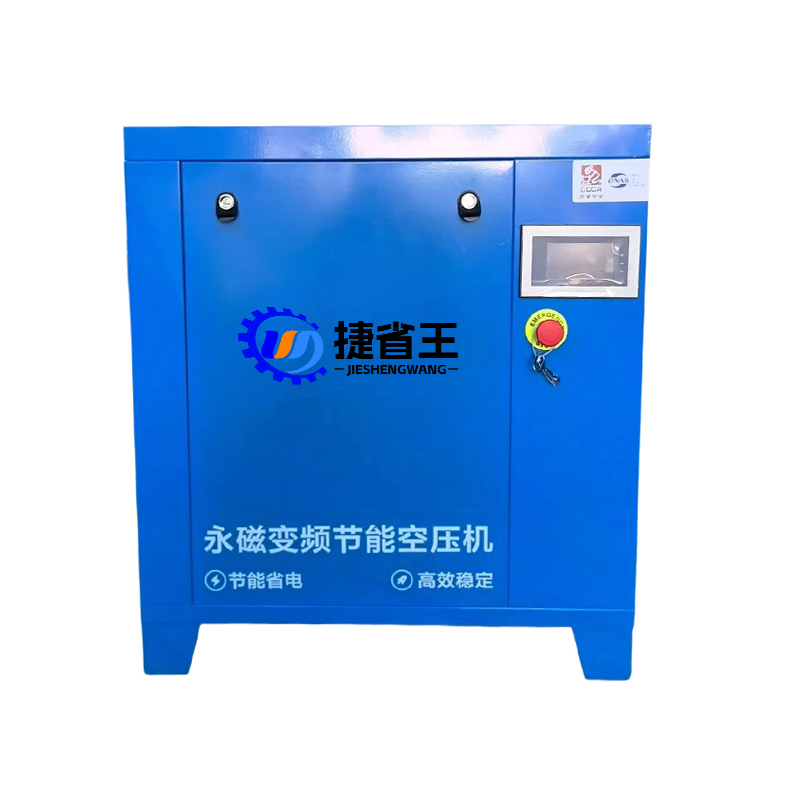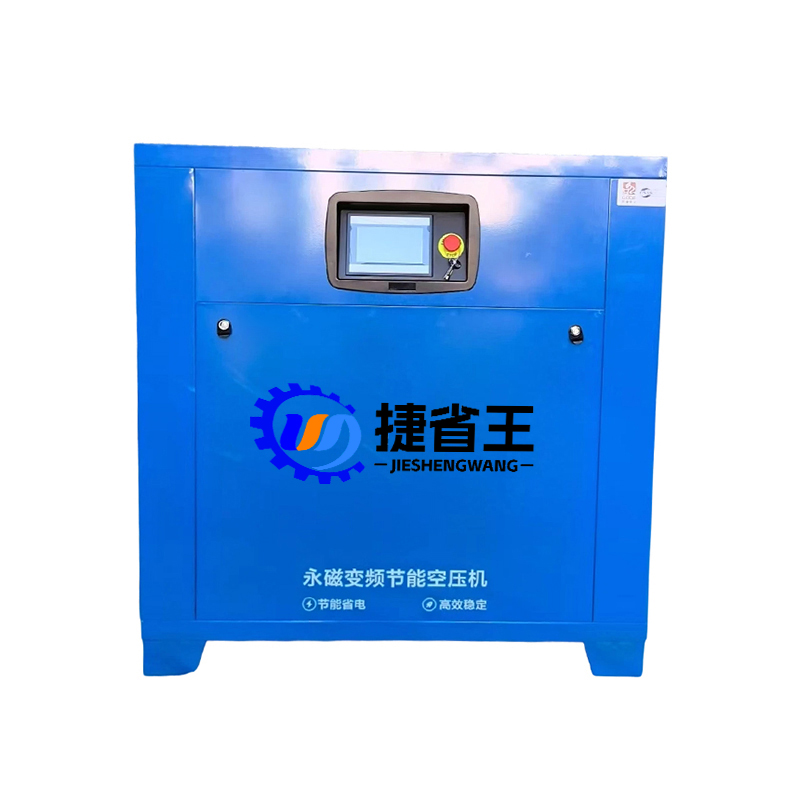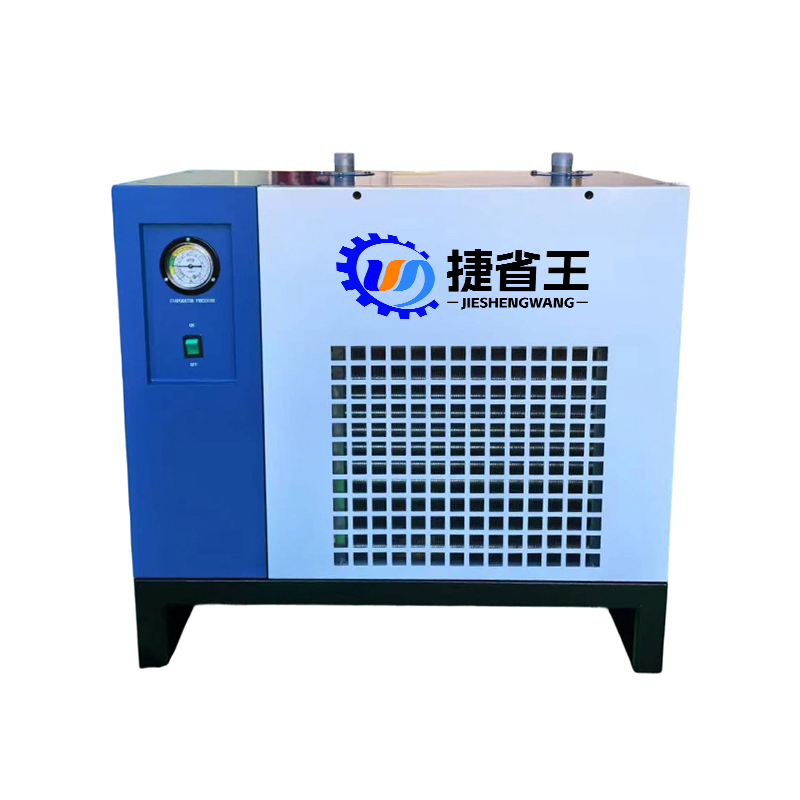How does a normal temperature refrigerated dryer optimize the initial freezing efficiency of materials through a pre-cooling system?
Release Time : 2025-10-13
The pre-cooling system of a normal temperature refrigerated dryer is a key component in optimizing the initial freezing efficiency of materials. Its design must balance thermodynamic equilibrium and material property adaptation, achieving efficient freezing through multi-dimensional technical approaches. The core function of the pre-cooling system is to rapidly reduce the material temperature to below the eutectic point, ensuring complete solidification of moisture and laying the foundation for subsequent sublimation drying. This process requires addressing three key issues: heat transfer efficiency, temperature uniformity, and material structure protection.
The heat exchange efficiency of the pre-cooling system directly impacts the freezing rate. Traditional air-cooled pre-cooling uses forced convection to transfer heat, but this can lead to uneven temperature distribution. Modern normal temperature refrigerated dryers often utilize contact pre-cooling, placing materials directly on pre-cooling shelves and achieving efficient heat transfer through a heat transfer medium. Some models also incorporate liquid nitrogen direct injection technology, utilizing the extremely low temperature environment to instantly reduce the material temperature, significantly shortening freezing time. This design not only improves heat exchange efficiency but also reduces energy consumption during the pre-cooling phase.
Temperature uniformity control is another technical challenge in pre-cooling systems. Excessive temperature gradients within the material can lead to varying ice crystal sizes, which in turn affects drying efficiency and product quality. To address this issue, pre-cooling systems often employ a staged cooling strategy: initial rapid cooling to near the eutectic point, followed by a gradual cooling through the eutectic region, before finally stabilizing at the target temperature. This control approach prevents residual liquid from remaining in the material due to insufficient supercooling, and also prevents internal stress concentration caused by excessive cooling. Some high-end models also feature real-time temperature field monitoring systems, which dynamically adjust cooling power to optimize temperature uniformity.
Material property adaptation is a key consideration in pre-cooling system design. The freezing behavior of different materials (such as solutions, suspensions, and solid tissues) varies significantly. For highly concentrated solutions, the pre-cooling system must control the cooling rate to prevent solute segregation. For biological samples, it is important to prevent excessive ice crystals from damaging cellular structures. To this end, pre-cooling systems often incorporate an annealing function, which periodically increases the temperature during the freezing process to promote ice crystal reorganization and form a more uniform microstructure. This design improves drying efficiency while preserving the biological activity and physical properties of the material.
Coordinated optimization of the pre-cooling system and the subsequent drying stage is crucial for improving overall efficiency. The ice crystal structure formed during the pre-cooling stage directly impacts the mass transfer efficiency of sublimation drying. Small, uniform ice crystals shorten drying time, but overly fine crystals reduce porosity, hindering moisture escape.
Thus, the pre-cooling system must strike a balance between ice crystal size and pore structure. Some models utilize variable temperature pre-cooling technology, dynamically adjusting the cooling curve to control ice crystal growth, thereby improving both drying efficiency and product quality.
Energy consumption optimization is a practical requirement in pre-cooling system design. Traditional pre-cooling systems consume high energy due to continuous operation. Modern models incorporate intelligent control technologies to achieve on-demand cooling. For example, variable frequency compressors adjust output power in real time based on material temperature, or phase change materials are used to store cold for intermittent cooling. These designs not only reduce operating costs but also minimize equipment wear and extend service life.
The modular design of the pre-cooling system enhances the adaptability of normal temperature refrigerated dryers. To meet the pre-cooling needs of different materials, the equipment can be configured with a variety of pre-cooling modules (such as liquid nitrogen pre-cooling modules, cryogenic pre-cooling modules, and gradient pre-cooling modules). Quick module replacement enables a single machine to be used for multiple purposes. This design is particularly suitable for small-batch, high-variety production scenarios, significantly improving equipment utilization and return on investment.
The ease of maintenance of the pre-cooling system also impacts overall efficiency. Modern normal temperature refrigerated dryers reduce equipment downtime and maintenance through optimized pre-cooling shelf structures, removable condensers, and integrated self-cleaning functions. Some models also feature a remote diagnostic system that monitors the pre-cooling system's operating status in real time, providing early warning of potential failures and ensuring production continuity. These features enhance the equipment's economic efficiency and reliability throughout its entire lifecycle.






